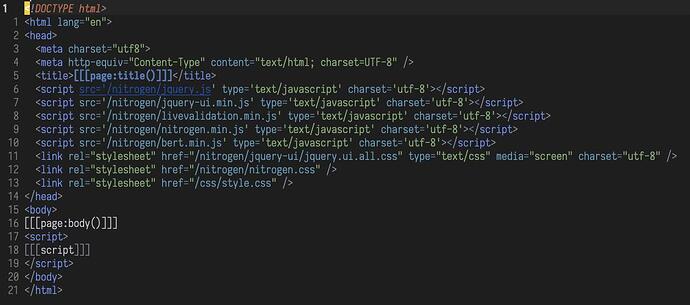Chapter 1 - Frying Pan to Fire
I really like the way the book is written. It’s like a story. It’s very different from all the other books of the same category.
Installing Nitrogen is not like installing rails nor phoenix, you need to clone the nitrogen repo under nitrogen/nitrogen.
After that, by cd into the nitrogen folder, it will generate a fresh new app with make.
make rel_inets PROJECT=devtalk
By inspecting the Makefile I can see that you’re not forced to use one specific web server like Erlang’s basic one.
You can choose between – all with different versions like slim:
- Cowboy
- Inets
- Mochiweb
- Webmachine
- Yaws
To be honest I only knew the existence of Cowboy and Inets. Probably gonna check the others.
By cd into devtalk and running bin/nitrogen console the server starts running on 8080.
The code which interests me is under the site folder.
By crack opening the templates/bare.html as suggested by the book, I can see this:
It seems to be the Nitrogen’s “secret sauce”. Like sharding for MongoDB web-scale…
I really like the little notes like this one:
Most of the Erlang community prefers Emacs,
but the authors are oddballs and prefer Vim.
I agree a 100 percent ![]()
It’s important to note that since Nitrogen 3, it uses Rebar3.
Also that ViM and Emacs got an extension to handle a special indentation for Nitrogen.
It goes from this:
Elements = #panel { body=[
#span { text="Hello, World"}
]},
to this:
Elements = #panel {body=[
#span{text="Hello, World!"}
]},
Which is in fact probably quite helpful in a big file.
The syntax reminds me of Elm, and its special way to define HTML in this style.
This first chapter is a little ice breaker, nothing too technical, but it lays the foundation of the book. I kinda like it.


